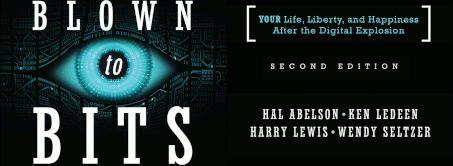Readers of B2B Chapter 8 (Bits in the Air) know about the dynamic of spectrum utilization. Incumbents who got use of the spectrum when technologies were less advanced and could use the resource less efficiently fight to maintain their control and to keep out any competition. They simply have no business reason to look to the public interest of letting others use what they regard to be their land — even though they don’t need as much of it as they used to — or for that matter to use any newly available land, if that would create competition for their business. This dynamic is a huge innovation-stifling force.
The issue of the day is what to do with the parts of the spectrum that will be freed up with TV broadcasting goes all-digital, which will happen in this coming February. The stakes are extremely high, and the level of distortion and rhetoric matches.
There are two basic possibilities; To auction the spectrum to private parties who would be licensed to use it, keeping out anyone else, in exactly the way television, radio, and cellular telephone incumbents now hold licenses to use certain spectrum bands; or to allow the spectrum to be used in an unlicensed fashion, in the way the use of little radio broadcasters and receivers, in the form of the wireless routers used for Internet access in homes and in coffee shops, emerged when a small sliver of spectrum was made available for unlicensed use some years ago.
As the federal government looks for ways to raise cash these days, the advocates for licensed use are claiming that an auction for licensed uses might raise as much as $24B, and that unlicensed use would cause all manner of interference with everything from television to the wireless microphones used in churches.
Advocates for unlicensed use counter that the amount that could be raised from an auction is grossly exaggerated and the interference claims are bogus. And that the economic benefits of allowing the development of unlicensed technologies are enormous. (“Unlicensed” does not mean “unregulated.” Those wireless routers have to stay in their spectrum band and under their power ceiling.)
A clear and sober rebuttal of the incumbents’ claims is in a report called “There is No Windfall in the White Space” by the New America Foundation. From the Summary:
As Alexander Pope opined, hope springs eternal: And exploiting this natural optimism are interest groups holding out the hope of a budgetary windfall for a cash-strapped Congress if only more spectrum can be auctioned at ever-higher prices. Now it is the turn of the digital television (DTV) “white space” to spur this forlorn hope. And this hope is as precisely forlorn as the economic analysis presented below concludes. A one-time auction of the guard band and other vacant channels in each local television market ‚Äì so-called “spectrum white space” ‚Äì would provide minimal revenue to the Treasury, while simultaneously ensuring that most of this unused “beachfront” spectrum will remain fallow, stifling the broadband services and innovation that could generate far more long-term economic activity.
Or you can read this brief report about Google co-founder Larry Page’s opinion, as he expressed it to Congress this week:
Calling claims of potential interference with existing broadcast stations “garbage” and “despicable,” Page charged that FCC field tests this summer had been “rigged” against spectrum-sensing technology that’s designed to enable exploitation of white space.
Google, as we blogged earlier, wants to promote a technology that would allow the same phone to use whatever cellular service is available. More than that, it would actually take bids, on the fly, from the services whose signal power in the area was strong enough, and place the call on whatever network made the best offer.
The level of rhetoric is quite high here. But it’s a once-for-all-time decision between having the government sell an asset to the highest bidder to cover a small part of its debt, or making it available for the public good through innovation by a much broader variety of private enterprises. The incumbents’ experts simply can’t be trusted, and the NAF report explains why.
